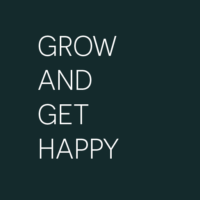Consistency – 5 Ways How to Be Consistent
Once again a New Year’s Eve is over and you have made all kinds of good resolutions for the coming year.
‘I’m going to quit smoking!’ ‘I’m going to lose 10 lb next year!’ ‘I’m going to eat less candy!’ ‘I’m going to exercise more!’
You may have held out for a few days or even weeks, but by then you’ll be back to your
normal behavior. Does that sound familiar? You’re not alone in this? Very few
people stick to their intentions for long. I, too, have not been able to keep
my resolutions alive very well in the past.
Why is that? How can you hold out?
I’d like to present the answer to these questions based on my current problem. My question is: How can I manage to write more blog articles? The reason for my problem is: If I don’t write regularly, the articles won’t be found so easily by the search engines on the internet and therefore will be read less.
So what do I have to do to be more productive? Of course – write more! The answer is obvious.
But how does the implementation work? How can I increase my consistency?
1. Goal-setting (S.M.A.R.T. Goals)

To answer this question, I would like to go back to the above examples. And in doing so, I have to talk about the so-called goal-setting.
But first of all, I would like to state the following. Your goal has to be important to you. You need a big WHY to do what you are doing. For me, that is the best motivator for you to get and stay consistent.
If you know your goal you should write it down. Just by writing it down, you have already moved a little bit in the direction of the goal. This goal can also be spoken as an affirmation whether silently in your head or even better spoken out loud.
Now let’s take a closer look at the examples I mentioned.
‘I’m going to quit smoking!’ was my first sentence.
What is good in this example is the formulation of a concrete goal. Furthermore, it is formulated personally, i.e. in the ego-form. Nevertheless, this sentence can be formulated better.
After all, in order to achieve a goal, we need a concrete, personal formulation. Furthermore, a goal should be positive, written in the present tense, time-bound, and measurable. Behind this is the concept of the so-called S.M.A.R.T – Goals.
S. stands for specific, M. stands for measurable, A. stands for attainable or achievable, R. stands for realistic and T. stands for time-bound.
As already briefly mentioned above, the formulation should also adhere to the three P’s: Positive, personal, and presence. Written in presence, by the way, because it brings the goal into the present. Because otherwise it always remains in the future.
Maybe you have already heard about this concept of S.M.A.R.T. – Goals and maybe you are already applying it. Most of the time we fail at this very step of applying what we have learned. Here I am also speaking from my own experience. You have to get the courage to really put things into practice.
Let’s get back to my smoking-example. Applying the S.M.A.R.T. goals method, the sentence could be as follows: I (= personally) am (presence) quite simply (positively)
non-smoker on Dec.,31st 20XX (scheduled). This sentence as a whole is now concretized (S. = specific), measurable (M. = measurable), achievable, or attractive (A.), because others have already achieved this. In addition, the goal is also actually achievable, i.e. realistic (R. = realistic). With the attached date it is also scheduled (T. = time-bound).
So now you can easily reformulate each goal for yourself.
For me and my specific problem, for example, this means that now ‘I easily write half a page a day for the next 30 days.
When I’m in a research period for a new topic, my goal is a little different. In this case, I have to work 30 minutes on my research instead of writing half a page.
2. Divide the Task into Smaller Sub-Tasks

Another very good consistency or productivity tool is to divide the big overall problem into small amounts.
Maybe you have already heard the quote ‘how do you eat an elephant? One bite at a time!’ For example, if you wanna write an article with 1000 words, with writing half a page each day this goal will be reached in four to five days. It only takes about half an hour a day and this goal will be achieved.
And another good tip is if this should be possible for you, start with the most important activity, that is the activity that brings you the biggest progress, first. Research on the subject of willpower has shown that it decreases sharply over the course of the day and you will probably have noticed this yourself. If you are not able to start this one thing first thing in the morning, at least set a time for your activity.
It is important that you plan for this the day before, otherwise, you will always find new excuses to postpone the work.
My example of writing is, as you have probably already thought, something different from,
for example, the goal of becoming a non-smoker, since it is about ‘leaving something out’, namely cigarette.
There is also a ‘trick’ here. Replace smoking with something else, something positive of course, for example, drinking water, chewing gum, or a mini-meditation. So whenever you would actually smoke a cigarette, do your substitute action. Here, too, every hour without a cigarette is a small subgoal and a reason to be proud of. Every second in which you don’t smoke brings you closer to your goal.
3. The Power of Challenges – they can increase your consistency
What works very well for me is when I ‘prescribe’ a challenge to myself, as happened above (‘write half a page every day for 30 days’.
A challenge like this doesn’t only work for me but also for millions of other people. If you wanna have evidence to that go to the internet and do a ‘challenge-research’.
It’s even easier to keep up with a challenge if you find a like-minded person who will go through the challenge with you – an accountability partner. This person is then your coach and vice versa you are his. If you are only responsible for yourself, you tend to give yourself some time off. But you don’t want to constantly cancel or explain to your partner why you couldn’t stick to this or that.
4. The Power of Habit – implementing the habit of consistency
Smoking is about breaking a habit, writing or something similar is about getting into a
habit. There are also many studies on the subject of habits. All of them show that the majority of our activities and behavior are habits and happen more or less unconsciously. This is remarkable. Think about what your typical day looks like and how it runs. You will find that it really is true. Most things do not need special attention because they happen almost automatically. The brain works this way to work as efficiently and economically as possible.
The problem is that you may now be doing something almost automatically that you do not want to do at all. But to change that requires you to rewrite your program.
This rewriting of your program requires daily attention for 66 days (there are different statements about the duration of days in the literature). If your old habit is still there after 66 days, you at least will find that it is much easier to practice your new habit then. Here I speak from my own experience.
So I have wanted to acquire a positive morning routine for a long time and I have now
achieved this. I would not like to miss it anymore. The beginning was admittedly difficult (‘Everything is difficult before it is easy.’ – Saadi, Persian poet and mystic), but with every day it became easier and now it almost runs by itself. On some days I don’t manage to get out of bed the way I want to, but it is now a matter of course for me to get back to my morning routine as soon as possible. If you wanna learn more about morning routines check out this article: 3 Amazing Morning Habits to Start Your Day Right (plus a 60-minutes morning ritual).
However, at the beginning of the familiarization phase of a new habit, it is best not to skip a day, because then you are more inclined to fall into the old pattern which could disrupt cour consistency.
Now, if you are planning to change a habit, skip it, or start a new one, you should reward yourself for achieving the sub-goals. This motivates you to be consistent. For example, go out to eat or buy a little something as a reward.
Another good piece of advice is to choose the same date for practicing your new habit. Unfortunately, this is not always possible, I know. But try your best.
Okay, and now let’s assume that you have reached your goal and have worked in your new habit – Congratulations😊
But what comes now?
5. Use an Accomplishment-Board
First of all, as mentioned before, it is very important that you reward yourself and celebrate your success with someone else. We should do that more often anyway. We usually think much longer about defeats than about successes.
You may have heard of a vision board, a poster with, for example, photos of things you want to achieve in life. Recently I heard about an idea (from John Assaraf) to create a so-called accomplishment-board. On this board, you stick photos of your personal successes, i.e. of what you have already achieved. That way you can always remember that you have already achieved a lot. This is especially good when you have a bad day.
By learning the new habit or skill, you have grown quite a bit, and you are in some ways
stronger or better than before. Now that you are aware of this and have celebrated this success accordingly, you consider a new activity or habit that you want to master or discard and start the process anew.
Summary
Here again, are the points I have mentioned that you should keep in mind when learning or
giving up a habit and trying to increase your productivity and self-discipline.
1. S.M.A.R.T.-Goals: Your goals should be
SPECIFIC, MEASURABLE, ATTRACTIVE, REALISTIC, TIME-BOUND.
Write down your destination.
2. Divide your final destination into stages and think about small rewards!
Try to start with the most difficult and important task in the morning!
3. Make a challenge out of your goal (best to work with someone else)!
4. If you want to learn a habit, hold out for 66 days (preferably without interruption)!
Try to reserve the same time for this new activity
5. After an accomplishment celebrate your success! Use an accomplishment-board.
I hope, with this post I was able to help you increase your consistency and did motivate you to get rid of something negative or get into the habit of implementing something positive. I am curious to know what it is. Therefore please write it in the comments.
To your success😊
Michael
